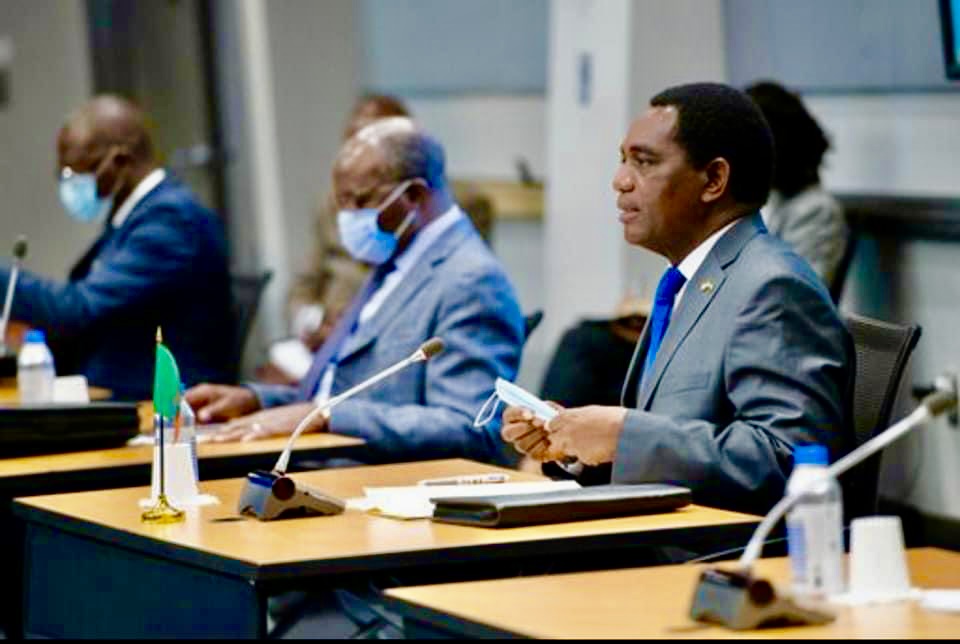Amidst a cocktail of positives, ranging from the recent International Monetary Fund (IMF) Staff Mission $1.4 billion bailout agreement between Zambia and the Washington based lender to ebbing yields in government securities (signaling lower term funding interest rates), the last bond sale of the pandemic year 2021 had a lot to hint to the markets. The central bank successfully raised one and half yards (K1.5 billion) worth of government paper in a debt sale that saw very strong appetite and purchasing power north of K4.3 billion in bids.
IS THE KWACHA BOND CURVE BOTTOMING?
In the final bond sale of 2021 held on Friday December 24, yields still ebbed a further 50-115 basis points (bps) across the fixed income curve with immense pulse observed in the 5 and 10 year points whose returns sagged to 21.95% and 24.09% respectively. Demand for these two (2) tenors accounted for 61.0% of the appetite (bids). Deviating a little, the 1 year treasury bill rate could have been an outlier a week ago when it sent a bearish signal when it climbed 150 bps to 15.0% at a time market expectations were of further rally’s. However the bond sale outcome on Christmas Eve allayed earlier bearish fears.

The omicron variant has caught the world by suprise whose effects are still being studied. This will determine how markets will proceed into 2022.
The global pandemic situation has exposed market jurisdiction correlation patterns especially when it comes to tracking excess liquidity from the west all the way to Emerging and Frontier Markets (EMF) in Africa, Zambia inclusive. COVID19 effects did coerce global central banks into injecting liquidity aimed at cushioning economies against disease induced credit risks and most importantly in preserving financial system stability with the intent of effecting growth which had significantly shriveled. This action nonetheless bred excessive inflation which central banks are now trying to address. Excessive inflation in the west, at a time when treasury yields are ultra thin forced money managers and investors to seek other more lucrative investment options in jurisdictions with higher premiums above inflation such as Africa. Assets in EMFs still posed more attractive in dollar terms too explaining the appetite for securities observed in the year.
However worth mentioning is that pandemic risks posed by the recent omicron variant will determine global monetary policy posture which in turn affects the indigenous money markets.
LOCAL POLITICAL RISK FACTORS COINCIDED WITH PANDEMIC INDUCED GLOBAL FUNDAMENTALS
Back to Zambia, this coincided with risk appetite claw back from subsiding political risks after an August poll that saw Hakainde Hichilema ascend to power. Africa’s copper hotspot has seen a sentiment boost in the last 3 months reflected in narrowing credit defaults swaps spreads on its dollar bonds, price increase (fall in yields) on its default rated government paper, against all odds.

Zambia’s President and Chief Investment Officer (CIO) Hakainde Hichilema courts the World Bank in Washington DC.
This reflects a shift in risk skew from shorter dated higher yielding to a more longer date skew as players signal confidence in Zambias future prospects.

US Fed Chair Jerome Powell. The US Feds tapering program is key determinant of the opportunity most EMF nations are enjoying as it gives their currencies support while ebbing fixed income yields.
US FED WILL DETERMINE HOW MUCH LONGER EMF ASSETS WILL BE ATTRACTIVE
It is worth noting that the window of opportunity for yields to ebb-further is narrowing as the US Feds intention to commence its tapering program aimed at reigning in on inflation could make western treasuries attractive once again and hence global liquidity could be redirected back to the western markets.
Lower yields will compress Zambia’s term funding costs in the medium to long run though the paradox between higher cost push inflation effects from higher energy prices and associated impact on interest rates could be determined by the extent to which Kwacha bulls manifest to 1Q22, the deadline for the copper producers debt restructure program.
The Kwacha Arbitrageur

